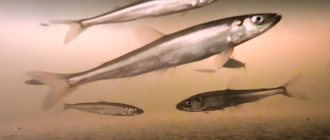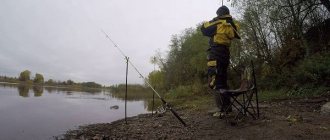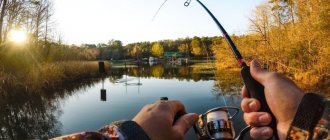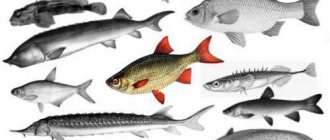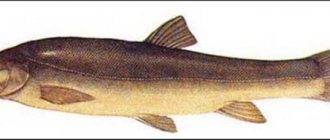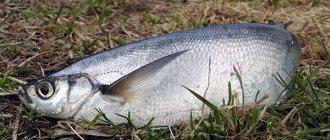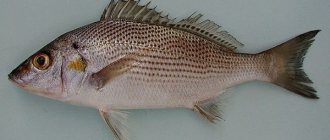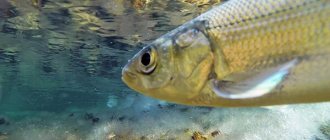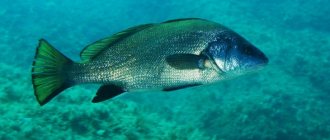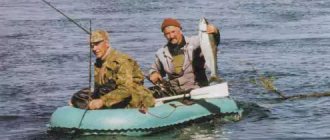Winter is coming to an end, the air temperature is gradually rising, roofs are beginning to shed “tears of joy”, just a little and the thaw will eat up the last ice. At this time, all winter fishing lovers go to the reservoirs to please themselves with a good catch. The last moments of winter give fishermen a lot of emotions, because all the fish become more active and begin to confidently attack the hook with bait. In this article we will talk about catching chebak or roach, whichever is more familiar, bait and groundbait, which is used during fishing.
There is a great chance of catching a trophy, sparkling chebak, which can reach a weight of 300 g. In the spring, despite the high probability of catching a chebak, even in this happy time, funny things happen to fishermen and some fishermen come home empty-handed. How to explain this? – there may be several main reasons, the main ones of which are: the wrong place for fishing, bait and bait, as well as rough gear. To ensure that your exit to the last ice is successful, we will analyze the main aspects and nuances that will ensure you catch the handsome chebak.
Where to catch chebak in winter
In order to catch a fish, you must first find it. It happens that you drill several holes, try to catch, change the type of wiring and experiment with the choice of jigs, but the fish refuses to bite. This most often happens due to sudden changes in weather and atmospheric pressure.
We conducted an experiment. They drilled a hole and lowered the camera into it. There were a lot of fish at the fishing spot. They offered the chebak all kinds of bait. The fish was passive and refused to bite. A day later the weather stabilized. And towards evening the active biting of the chebak began.
In winter, large chebak stand in holes with a weak current, and small fish prefer to stay closer to the shore and shallow water. Winter fishing for chebak from ice is a fun and interesting activity. Bites occur at the bottom, in the water column or in the upper layers of the reservoir. Here you need to understand where the fish are located, then the bite will not take long to arrive. To drill holes, it is better to use a drill with a diameter of 80–100 mm.
There is no need to drill too many holes! Chebak is afraid of the light. A school of fish may move to more shaded areas.
Habitats and lifestyle
This fish lives in ponds, lakes, reservoirs, large and small rivers. Once in a new body of water, the sorog quickly multiplies and becomes one of the most numerous species. This fish can be found in any part of the reservoir. Sometimes it stands at great depths, but most often it sticks to accumulations of aquatic vegetation, bays and snags.
In flowing bodies of water, the sorog prefers to stay in a weak or moderate current. This fish is found in the following rivers:
- Tobol;
- Irtysh;
- Indigirka;
- Kolyma;
- Khilok;
- Chikoy.
The sorog feeds mainly on worms, small crustaceans, insect larvae and green algae. Plant, animal and artificial baits are used as bait. Predatory fish readily eats sorog, so it can be used as live bait.
Spawning begins in March or April and ends in early May. This fish spawns in rocky areas covered with aquatic vegetation. Sorog gathers in large flocks and lays relatively large quantities of eggs. Even a small female can lay 60,000 eggs. After spawning is completed, the schools move to deep-sea areas and begin to feed intensively, eating algae, mollusks and eggs of other species.
The laid eggs adhere to the algae and develop in about 2 weeks. The hatched fry move closer to the surface of the reservoir and begin to quickly gain weight. By the end of summer, juvenile sorogi grows up to 5 cm. After 2-3 years, the fish becomes sexually mature, and its size increases to 20 cm.
Sorog flocks are formed based on the size of individual individuals. In a school of small individuals there can only be 1 large fish. The smallest specimens stay closer to the shore. In winter, this fish gathers in large schools, and after the ice melts, it moves to shallow water areas, enters streams, small rivers and bays. The school can be detected due to splashes and fluctuations of aquatic vegetation. During this period, the sorog begins to intensively search for food, but at the same time remains cautious and quickly leaves if it notices the presence of a fisherman. After the water warms up, the fish no longer feed so actively.
This species is omnivorous and moves along a river or lake around the clock; it is unpretentious and undemanding to water quality. This fish feels equally good in both large rivers and shallow ponds.
Recommended fishing time and winter bite for chebak
Chebak pleases with a good bite on the first and last ice. The ideal fishing time is morning and evening. At lunchtime, the fish rarely bite. A sudden change in weather can affect chebak fishing in winter. The fish is frightened by extraneous noise. Silence is the key to a bite! The ideal fishing time is sunny weather, but even during snowfall the fish can become more active.
I like to fish early in the morning. If I find a point and realize that there is a large roach standing there, then from time to time I throw small batches of food bloodworms into the hole. The bites don’t take long to arrive. The fish greedily grabs the bait, signaling a bite by bending or raising the nod.
Fishing in winter
Catching chebak fish
The most successful period of winter fishing should be considered November, December and February; in January, the fish practically do not “take”. It is at that moment, as soon as the first ice has formed on the reservoir, this subspecies becomes the most active, but as soon as the thickness of the ice begins to grow, the fish begins to lose its interest in absolutely everything. Because of this reason, catching a chebak in January is quite difficult. Excellent bite begins to be restored with the onset of a thaw.
As for time, of course – early morning, as well as afternoon, which lasts almost until sunset. As soon as the sun goes down, you can pack up your things and go home; there will definitely be no more bite. Also keep an eye on the weather conditions, as frequent weather changes (especially several times a day) can negatively affect the fish’s appetite. However, a cloudy evening is considered the most successful time for fishing.
It is best to look for chebak on the river near a concave coastal area; it is there, in the deep reaches, that the fish spend the winter. But with the onset of a thaw, the fish rise from the depths to shallow water.
For ice fishing, fishermen use an ordinary float rod with an elastic nod. And it’s extremely difficult to give an exact answer to what this fish bites on, so don’t be afraid to experiment. But the most popular among fishermen are both baitless jigs (devil) and jigs with natural baits. The last baits most often used are bloodworms, bread crumbs, or homemade dough or semolina.
If it doesn’t bite, then don’t be afraid and don’t be lazy to try. Moreover, not only change positions of jigs or baits, but also the fishing place itself. There is nothing difficult in playing with a jig: the bait sinks to the bottom, then rises 10-15 cm, and then falls, and it is necessary to observe some pauses, during which the bait simply lies on the bottom. You can also try more sophisticated baits - for example, flavored artificial bloodworms.
During fishing, do not forget to feed: if fishing occurs at shallow depths, then throw into the hole a bunch of ground crackers mixed with chopped bloodworms, crushed seeds and soaked in olive or sunflower oil. Well, if the depth is large enough, then it is better to use a small feeder. By the way, you can read about bait in our online magazine.
Sometimes you can miss a bite from a chebak, since this fish bites quite carefully, either for a while, delaying the nod, or causing it to flinch for a short time. So, at the slightest suspicion of a bite, make a quick, but not strong hook. A caught fish, especially a rather large one, will resist with dignity, so take your time and fish the fish as carefully as possible.
Tackle and bait for chebak in winter
A fisherman’s arsenal should include jigs of different colors, weights and shapes.
Gear for fishing for chebak in winter:
- fishing rod with nod and jig;
- bottom tackle;
- winter feeder;
- float tackle;
- tackle with a retractable leash.
Fishing rod equipment
For jig fishing, I use a fishing line with a thickness of 0.1-0.12 mm. Tackle for fishing for chebak in winter is easy to assemble. You need a rod, a nod and a jig.

The thickness of such a fishing line can withstand the resistance of a chebak weighing up to 500 grams. A large specimen must be fished out carefully and not force events.
Choosing a jig
If there is no bite, then you can experiment with the color of the jig at the fishing spot.
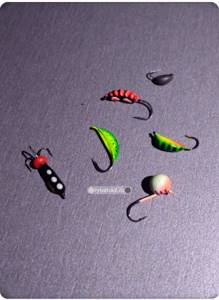
In stagnant reservoirs, fish actively bite on small jigs, but on larger ones, bites occur less frequently or are absent altogether.
On rivers with strong currents, anglers use heavy tungsten jigs. On the first ice, the color of the jig has virtually no effect on the bite. The fish are active at this time. The jig is needed to deliver the bait to the fishing point. The devil is a baitless tackle that “white” fish really like. It is important to choose the amplitude of the game.

Bait
When catching chebak in winter, most often they use a worm, raspberry and maggot. In addition to live bait, the chebak is not averse to trying dough, semolina mash and baitless jigs. I put 2-3 bloodworm larvae and one maggot (sandwich) on a jig.
Worms are a favorite delicacy of roaches. In the summer I prepare the soil in which I place the dung worm. I moisten the soil as it dries. And all the time I feed the worms with apple cores and banana peels. This procedure can be performed once a month.
The prepared live bait lasts me until spring. The worms reproduce successfully and have a specific smell that fish like.
How to catch chebak on ice with a jig
Any fish must be actively looked for while fishing. This is the key to the catch! Exciting winter fishing for chebak using baitless jigs, which include:
- nailball;
- goat;
- devil;
- ant;
- nymph;
- flies.
These types of bait imitate the larvae that are present in the chebak’s food supply. The amplitude of the game's vibrations should be smooth. You need to play carefully with no attachment. Sharp vibrations of the jig can scare away large fish. To achieve good results in fishing with baitless tackle, you need skills and years of training.
Current fishing technique
Winter feeder gear is successfully used in current fishing. Bells are attached to the tip of the rod, which serve as a bite alarm. The main line with a diameter of 0.2–0.3 mm is threaded into the feeder. The leash is a monofilament with a length of 0.5–0.7 meters and a diameter of 0.1–0.14 mm.
Bait for chebak in winter is easy to make. During the current, fishermen use bottom gear. The assembly principle is similar to a feeder bait. Instead of a feeder, a lead weight and two leashes are mounted.
A fisherman should have several fishing rods in his arsenal for winter fishing. I had a case when the fishing rod was lying near the hole. When a large fish was biting, the rod was under water in a matter of seconds.
Small roach are more active in winter. And to catch a trophy specimen, you need to experiment with wiring and change jigs.

Fishing in spring and summer
As soon as the ice melts, the first fishermen appear on the rivers. As has already become a good tradition, the open water fishing season begins with fishing for chebak. Spring chebak fishing is accompanied by anglers with many joyful, and not so, surprises. But still, why not treat yourself to this most exciting activity while the water in the rivers has not yet risen too much and the fish have not gone to spawn. It should be noted that spring fishing for this type of fish is slightly different from fishing in the summer months: in the spring, fish gather in large schools and constantly move around the reservoir in search of food, while in rivers they move upstream for subsequent spawning. In general, catching this fish in the spring is a kind of fishing at random, in constant motion.
After the last ice has melted, fish should not be looked for in depth; most of them gather in shallow places, close to the shore, which allows fishermen to use a float rod for fishing. Well, if shallow water areas well warmed by the sun’s rays are located far from the shore, then bottom gear will be quite appropriate for fishing.
In spring, the chebak prefers bait of animal origin: dung and earthworms, bloodworms, maggots. Bait on reservoirs with stagnant water in the spring works, as in other times of the year, the main thing when using bait (the general rule when feeding fish in the spring) is not to overdo it. Since the bellies of fish at this time of year are filled with either caviar or milt, there is very little room left in the stomachs for food, as a result of which the fish become full much faster than at other times.
Fish spawning occurs during the period when the water temperature reaches 10 degrees and buds bloom on birch trees (a folk sign). About a week before spawning, the males begin to become covered with a rash (growths), from this moment the fish completely stops feeding and lives off the accumulated fat. After spawning, the fish rests for a few more days and only then begins to “come to life” and look for food.
After spawning and subsequent illness, the fish can lose up to half of its weight. It is at this moment that the most interesting and exciting fishing for chebak begins. The fish are just going crazy! You can safely forget about all the tricks of fishing science, all that remains is to enjoy excellent fishing!
Chebak is often much larger than ordinary roach, reaches a length of 35 cm, and has tasty meat. Small fish are used by fishermen as bait for predators. In the spring, chebak can be caught using any bait, but if you want to catch really large fish, it is better to use lamprey larvae. The best place is some kind of recreation center near a lake or river where you can stop for the night, since large fish bite mainly at night. Smaller individuals can be caught almost everywhere using any bait, and it has been noted that the chebak stays near floating rods and sticks, this is especially noticeable during the spring flood.
In summer, the fish practically do not take live bait, and even in places of large concentrations it is very difficult to catch. In this case, especially in hot weather, experienced fishermen recommend using spoons. There is no specific type of spoon recommended for catching this particular fish, but it is better to use oscillating and rotating spoons of bright colors for muddy water and shiny ones for clear water.
Fish do not like sudden changes in weather, and therefore it is advisable to go fishing on days when the weather has settled. The bite has also been observed to pick up before a thunderstorm, especially in May, since at this time, even with a sharp change in weather, the atmospheric pressure does not change. Every doctor recommends that especially sensitive people during changes in pressure not to fuss and rest as much as possible, and the chebak - feeling that there will be changes, subsides.
Also, in the hot months, the chebak changes its habitat. Where there was a lot of it in the spring, there may not be any in the summer. In July-August, it is better to look for fish in the shallows, where they gather in large schools. Fishing time in summer is also radically different: it is best to catch chebak during the day, and early morning and evening are best left for other fish.
It is best to catch chebak with a float rod. This task can be handled by the familiar lapdog, which is capable of fishing large sections of the river and letting the float drift, the advantage of such equipment is that very precise control is exercised over the equipment.
It is better to take an inertial reel, as it is more sensitive and can control the float in the fishing zone much more accurately. We use monofilament fishing line with a diameter of no more than 0.14 millimeters, but the hook is selected depending on what kind of bait we will use. We will need a float that will hold the bait well at one point and show all the most careful bites.
Be sure to include a leash with a length of at least thirty centimeters in the equipment; it will soften the hook and will not scare away wary fish. I recommend using a maggot larva as bait, but it is best to use a worm. You can feed the chebak, but you need to do it wisely and in small portions. We use the same bait as for catching common roach. By the way, be sure to add part of the bait to the bait, then the concentration of chebak in the fishing zone will be much greater.
Groundbait for chebak
I prepare bait at home from crackers, cookies and gingerbread. To catch chebak in winter, I add roasted hemp grains, vanillin, sunflower seeds, vegetable oil, processed cheese and millet to the bait. I buy the cheapest mixture of “Roach-bream” and food bloodworms in the store.
I mix all the ingredients at home, add water, mix thoroughly and put it in a bag. Having arrived at the reservoir, I drill 3-5 holes and feed each one. The chebak’s bite doesn’t take long to arrive. After 30–40 minutes, a lot of “white fish” gather at the point.
Rusks, gingerbreads and cookies rolled through a meat grinder are well stored at home in a glass jar. Almost ready-made bait is always at hand.
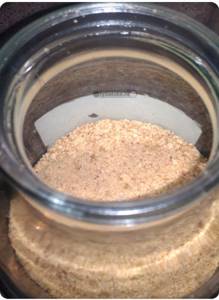
Catching chebak is fascinating in its own way. The holes are fed using a feeder. After 20–30 minutes, the fish accumulate at the fishing point. Roaches like the presence of live food in bait (bloodworms, maggots, worms). When weather conditions change, the bite may stop altogether. Most bites occur near the bottom. Large fish are careful, and fry are more active. Finding fish and understanding the behavior of the chebak leads to a good catch and long-awaited bites.
Lure
A well-fed place can significantly increase the efficiency of fishing for chebak. Since this fish is a schooling fish, the presence of bait allows you to lure a large number of individuals to the abandoned bait at once, which will make bites more frequent and fishing interesting.
You can either buy bait for catching chebak at the appropriate store or prepare it yourself. Pearl barley, boiled peas and various classic porridges are perfect for these purposes. There are also special recipes tested by experienced fishermen on this particular species. To make bait for chebak yourself you need to have:
- Sunflower cake.
- Brown bread crackers.
- Barley.
It's very easy to do. To do this you need:
- Boil pearl barley until slightly damp.
- Crush the cake.
- Using a rolling pin, roll out the crackers until crumbly.
- Mix the ingredients.
The ratio of components can be any and is selected for a specific body of water. In addition, by changing their proportions, the viscosity can be adjusted, since this parameter varies significantly for different current strengths, as well as feeding methods.
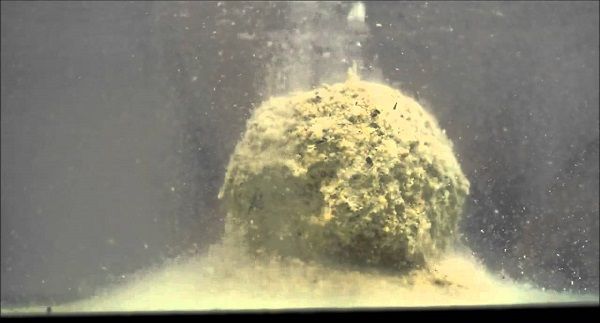
When fishing with a float rod, medium-sized balls are usually formed from the bait and thrown into those points of the reservoir where fishing is planned. In order to give them the proper viscosity, you can add flour or semolina to the composition - it will make the porridge more sticky.
And it is also necessary to add flavorings to the bait. They exist both artificial, sold ready-made in fishing stores, and natural. The latter include:
- Anise.
- Ground seeds.
- Cookie.
- Powdered milk.
- Biscuit.
- Hemp oil.
- Muku et al.
Their use in small quantities can significantly increase the effectiveness of the bait used. However, since chebak is quite picky about the composition of the mixture, one-component options are often sufficient, which are prepared faster and eliminate the need to search for infrequently found ingredients.
Winter fishing methods
You can catch chebak in winter using a float rig and a jig.
For a float fishing rod, it is better to use live protein baits:
- worm;
- maggot;
- mormysh;
- bloodworm;
- insect larvae.
Plant attachments:
- pearl barley;
- dough;
- bread crumb;
- semolina chatter;
- steamed cereals.
Expert opinion
Knipovich Nikolai Mikhailovich
Zoologist, hydrobiologist. I am interested in fishing at a professional level.
Important! Although plant baits are more often used for warm water, sometimes in the winter it is best to use a sandwich - a plant bait with flavor plus a live bait.
You can use a jig with the same bait as for a float rod.
As an effective method of fishing in winter, experienced fishermen use several winter fishing rods - 2-3 float rods plus a fishing rod with a jig.
Float rods with different attachments are used to identify the most effective one. Having determined the optimal nozzle, you can use it to attach it to the jig.
